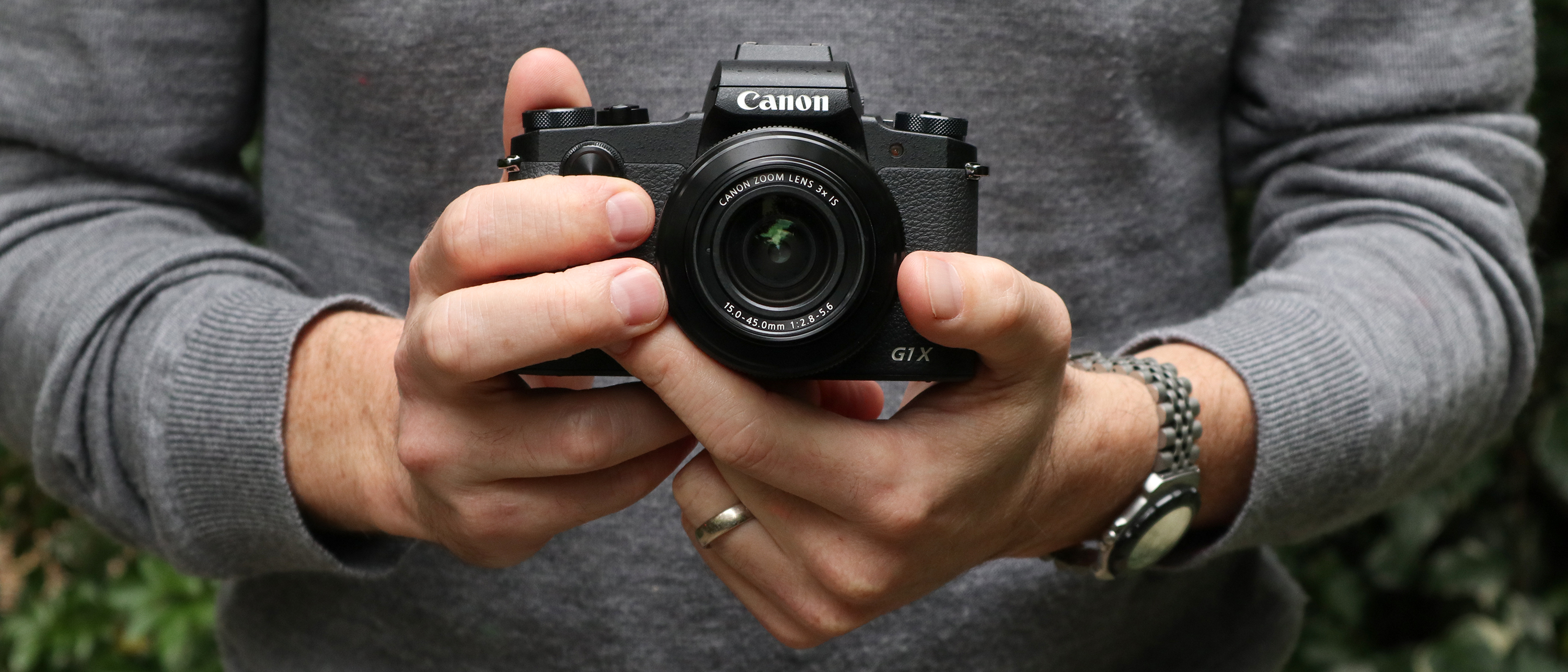Why you can trust TechRadar
Build and handling
- 14.8mm thinner and 16% smaller than G1 X Mark II
- Similar weather protection to EOS 80D
- Weighs 399g
The design of the Canon PowerShot G1 X Mark III is quite a shift from the Mark II, more closely resembling that of the PowerShot G5 X, and it's all the better for it.
The G1 X Mark II never felt that satisfying to hold, and felt unnecessarily cumbersome. The Mark III feels much better in the hand – despite squeezing in a larger sensor the camera is some 16% smaller and 14.8mm thinner, while the fit and finish are a noticeable improvement over the older model. There's a tiny built-in flash above lens, while the PowerShot G1 X Mark III is even dust- and drip-proof, with Canon stating that it offers similar weather sealing to the EOS 80D.
The PowerShot G1 X Mark III is in actual fact only a bit bigger than the G5 X
The PowerShot G1 X Mark III is in actual fact only a bit bigger than the Powershot G5 X – you'd be hard pushed to tell their silhouettes apart. Despite its diminutive proportions though, it still provides a pleasingly secure purchase thanks to the sculptured front grip and pronounced thumb rest. The textured grip has a nice tactile feel as well, which adds to the overall satisfying feel of the camera.
The controls are sensibly positioned, with the front command dial and top plate exposure compensation dial falling under the fingers nicely, while Canon has designed the shutter release to match those of high-end EOS cameras. There's now a single click-less control ring round the front of the lens as well, which can be assigned to functions such as manual focusing, or be used to zoom the lens, though we found the rocker switch positioned round the shutter button quicker to use for the latter.
Autofocus
- Dual Pixel CMOS AF
- Touch-and-drag AF
- 49 AF points on a 7 x 7 grid
Canon's Dual Pixel CMOS AF has impressed us for Live View photography on its latest range of EOS DSLRs like the EOS Rebel T7i / EOS 800D, so it's no surprise to see it make an appearance in the PowerShot G1 X Mark III.
Featuring 49 AF points arranged in a 7 x 7 grid, the system provides good coverage across the frame, although not quite edge to edge. Focusing is swift, with Canon stating 0.09 secs to acquire focus, while there's also the ability to touch and drag the AF area via the rear screen (even when using the EVF).
We found autofocus performance to be very good on the whole. Focusing is quick in good light, and while speed drops a bit when light levels fall, it still seemed to focus happily in most instances.
The PowerShot G1 X Mark III can do a solid job at tracking moving subjects as well, though it's not quite a match for the RX100 V's sophisticated AF system. We found it behaves better when the subject you're following contrasts more with the background, but it's still a capable performer.
Current page: Build, handling and AF
Prev Page Introduction and key features Next Page Performance and image qualityPhil Hall is an experienced writer and editor having worked on some of the largest photography magazines in the UK, and now edit the photography channel of TechRadar, the UK's biggest tech website and one of the largest in the world. He has also worked on numerous commercial projects, including working with manufacturers like Nikon and Fujifilm on bespoke printed and online camera guides, as well as writing technique blogs and copy for the John Lewis Technology guide.

